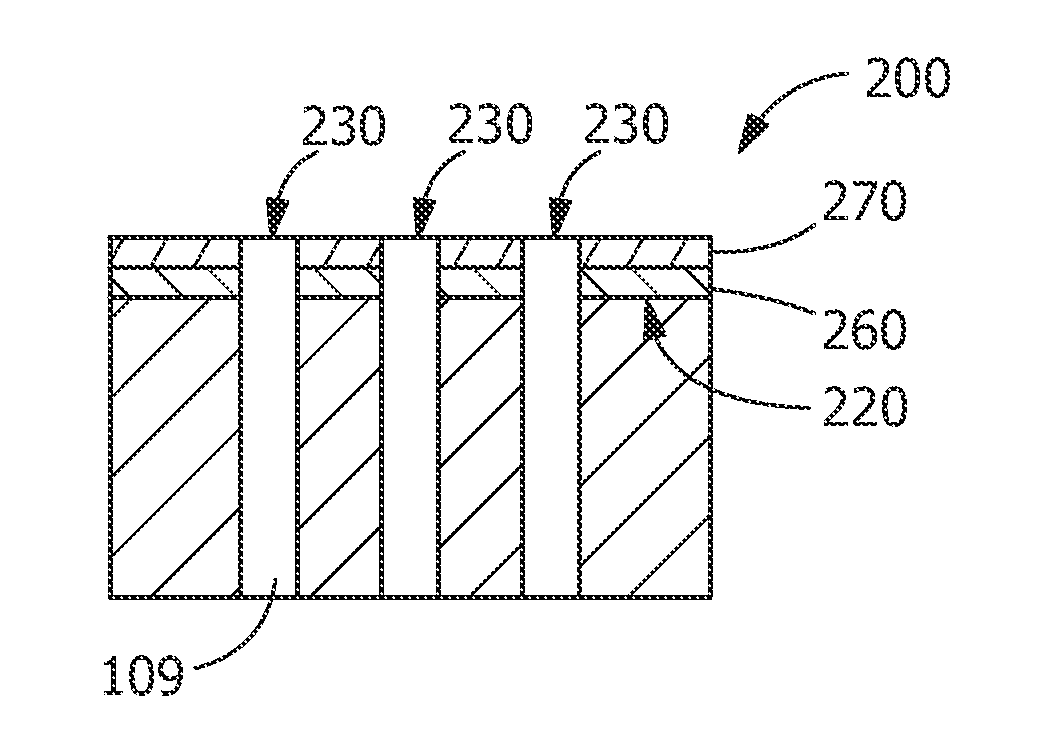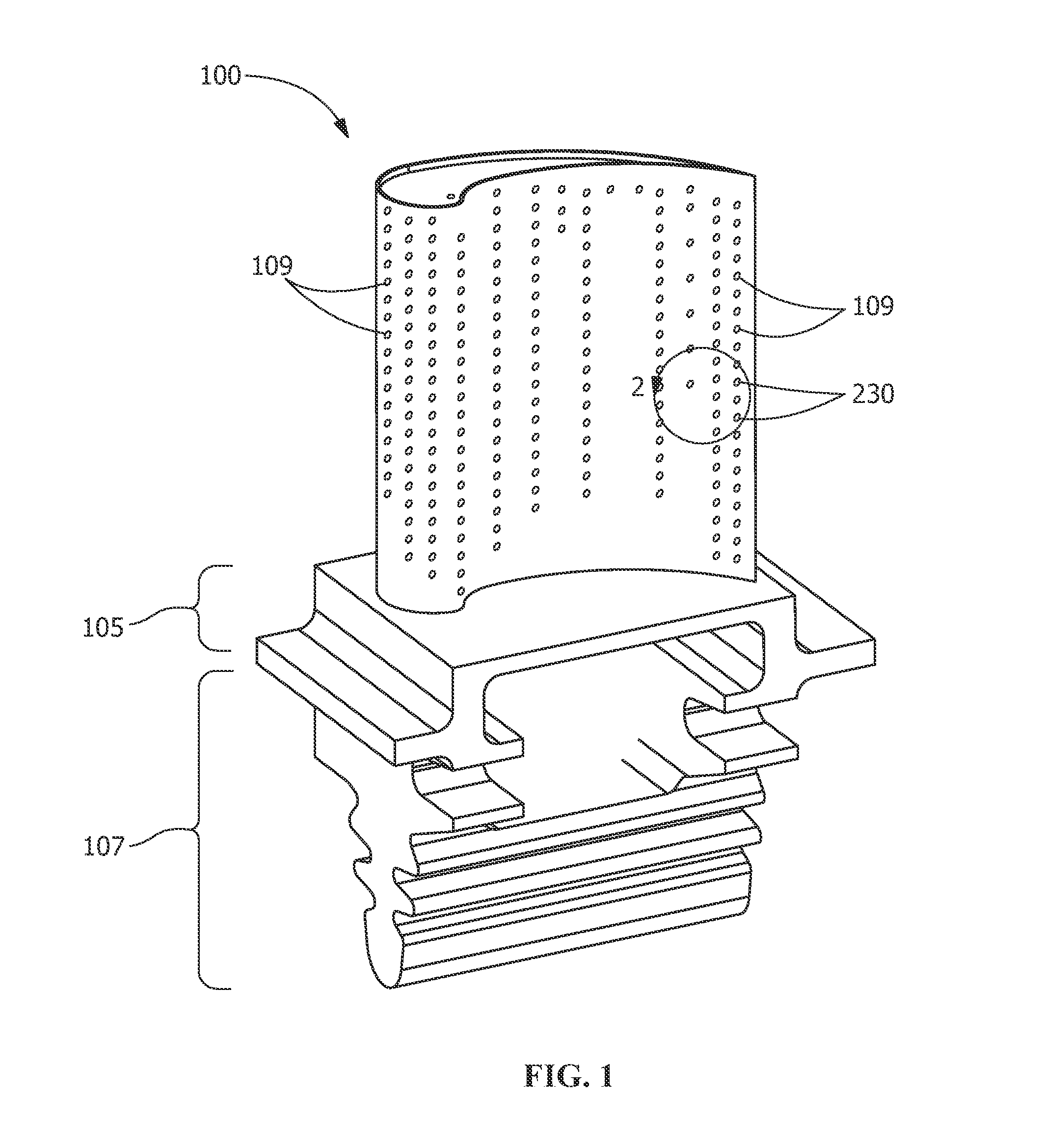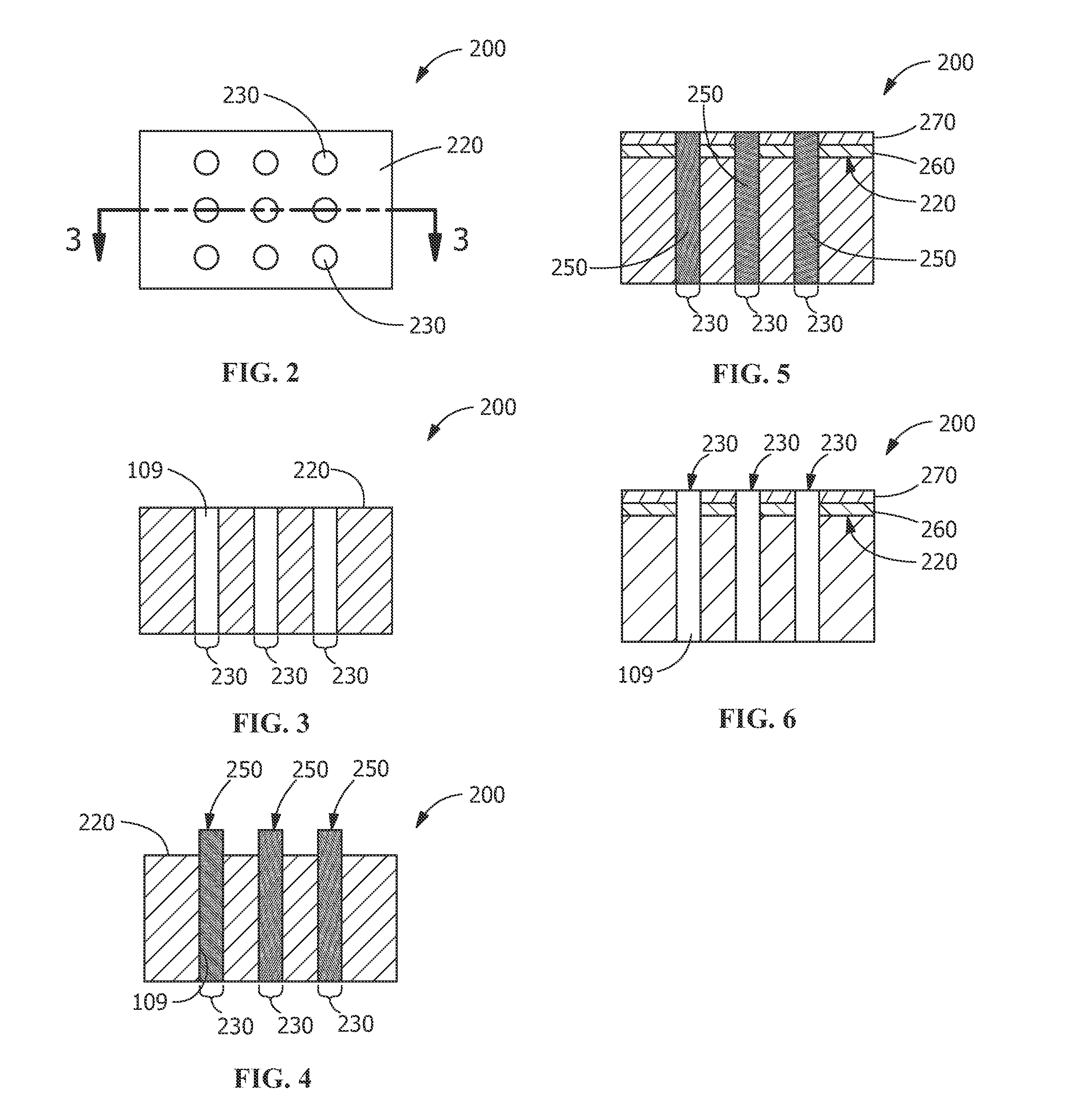Method of Coating a Component, Method of Forming Cooling Holes and a Water Soluble Aperture Plug
a technology of aperture plugs and components, applied in the direction of microcapsules, mechanical devices, machines/engines, etc., can solve the problems of at least partially blocking, affecting the application of tbc, and difficult to incorporate both systems
- Summary
- Abstract
- Description
- Claims
- Application Information
AI Technical Summary
Benefits of technology
Problems solved by technology
Method used
Image
Examples
example 1
[0035]In one embodiment, plug 250 comprises, prior to drying, 60 g alumina flour, 25 g 30% colloidal silica binder, and 15 g water. This composition is formed into a desired plug shape and is applied manually onto aperture 230, a cooling hole opening on a surface of a gas turbine stage 1 nozzle. A High Velocity Oxygen Fuel (HVOF) Thermal Spray process is used to apply first coating 260, a bond coating, to surface 220 of component 200. Next, second coating 270, a TBC, is applied to first coating 260 using Air Plasma Spray (APS) process. Next, component 200 is dipped into a bath containing warm water to dissolve plug 250, leaving a component 200 having a bond coat, a TBC and open apertures 230. After removing plugs 250 from apertures 230, final heat treatment is applied to component 200 to cure the applied bond coating and TBC.
example 2
[0036]In another embodiment, plug 250 comprises a graphite paste. The graphite paste includes fine carbon powder dispersed in a solvent (aqueous or non-aqueous) and may include special additives for adjusting viscosity, preventing adhesion to cooling holes, and preventing corrosion. Graphite paste is applied manually into apertures 230, or cooling hole openings, on surface 220 of component 200, a gas turbine stage 1 nozzle. A HVOF Thermal Spray process is used to apply first coating 260, a bond coating to surface 220 of component 200. Next, second coating 270, a TBC, is applied to first coating 260 using an APS process. Component 200 including plug 250 is heated in an air furnace to about 538° C. (about 1000° F.) to oxidize / burn off plug 250 including graphite in apertures 230. After burn-off any remaining bits or pieces of plug 250 in apertures 230 is air blasted to remove the remnant powder. After removing plugs 250 from apertures 230, final heat treatment is applied to the compon...
example 3
[0037]In another embodiment, plug 250 comprises a mixture of acetone, polymethyl methacrylate (PMMA), and alumina. In making plug 250, 20 wt % PMMA is dissolved in acetone, then alumina is added to maximize the solids content to form a paste. The paste is applied to apertures 230, or in the cooling hole openings on a surface 220 of component 200, a gas turbine stage 1 nozzle. The paste is dried forming plugs 250 in apertures 230. A HVOF Thermal Spray process is used to apply first coating 260, a bond coating to surface 220 of component 200. Next, second coating 270, a TBC, is applied to first coating 260 using an APS process. After applying first coating 260 and second coating 270, component 200 is dipped into an acetone tank to dissolve PMMA in plug 250. Acetone dissolves plug 250 leaving open apertures 230. Alternatively, ultrasonication may be used in combination with the acetone bath to remove plug 250 from apertures 230. After removing plugs 250 from apertures 230, final heat t...
PUM
| Property | Measurement | Unit |
|---|---|---|
| temperatures | aaaaa | aaaaa |
| temperatures | aaaaa | aaaaa |
| Curie Temperature | aaaaa | aaaaa |
Abstract
Description
Claims
Application Information
 Login to View More
Login to View More - R&D
- Intellectual Property
- Life Sciences
- Materials
- Tech Scout
- Unparalleled Data Quality
- Higher Quality Content
- 60% Fewer Hallucinations
Browse by: Latest US Patents, China's latest patents, Technical Efficacy Thesaurus, Application Domain, Technology Topic, Popular Technical Reports.
© 2025 PatSnap. All rights reserved.Legal|Privacy policy|Modern Slavery Act Transparency Statement|Sitemap|About US| Contact US: help@patsnap.com



